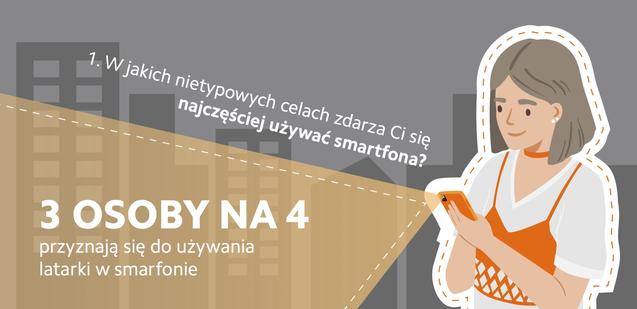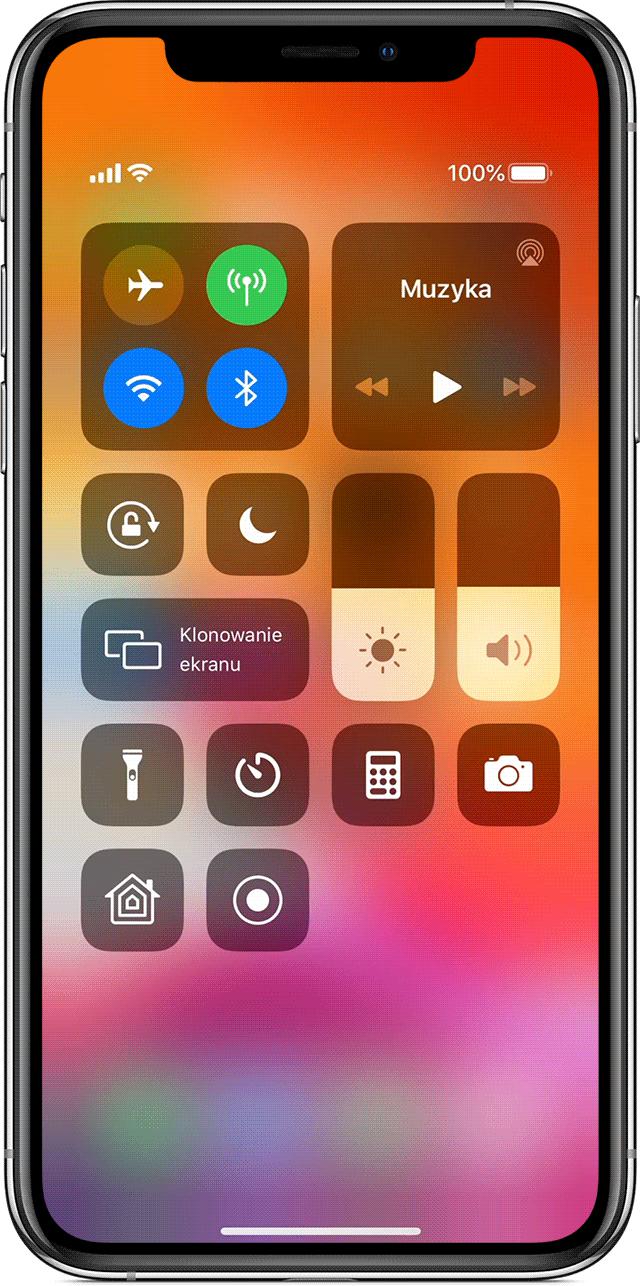Xiaomi has conducted a very interesting study in recent days, which shows what a Pole uses a smartphone for. Survey conducted on the Ariadna panel, on a nationwide sample of N=1078 people on May 7-10.
The results are quite surprising. The last two questions about Iga Świątek, the ninth WTA racket after Sunday's success in Rome, and the ambassador of Xiaomi are also interesting. Remember that the questions were asked before the tournament in the capital of Italy.
1. Do you use a smartphone?
It's no surprise - 93 percent. Poles use smartphones - it can be clearly seen in the subway, buses, trams and at house parties. Smartphones are the most popular, with 98% of them. among young people - up to 24 years of age. Interestingly, they gained the same popularity among middle-aged people, between 45 and 54 years old.
2. What do you most often use your smartphone for?
The main reasons for using a smartphone are communication and access to information on the Internet. 4 out of 5 Poles most often use a smartphone to talk, and more than half to write text messages. Women use these communication functions more, as well as the functions of taking photos or recording videos. It is also worth noting that every second lady admits to using social media or dating apps. In this aspect, men are more reserved or secretive - in the study, such use of a smartphone was declared by every third man. Just as women excel in finding relationships, men are leaders in finding ways to get there and outperform women by 7 percentage points in navigation and route planning. Two out of five people use smartphones to access banking services or make contactless payments.
3. For what unusual purposes do you most often use your smartphone?
The most valuable, according to Poles, additional function of a smartphone is the flashlight, which three out of four people admit to using. 27 percent of respondents count their steps with a smartphone - of course not on a calculator, but using a built-in accelerometer. Every third lady and every sixth man treats the smartphone as a mirror - either to admire their beauty or to check who is sitting in the back. For 2 percent men, the phone fulfills the role of a bottle opener. 1 person in 100, regardless of gender, vents their anger on a smartphone.
4. How often do you practice sport?
Owners of smartphones approach sports with a certain distance. One in five declares daily exercise, and almost one in four - exercises 2-3 times a week. 25 percent does not play sports at all. Men more often admit to a sporty lifestyle. Just like among younger adults, recreation prevails and only 17 percent. does not exercise, so between the ages of 35 and 54 we have more athletes. Nearly every fourth person declares that they practice sport every day, or almost every day, and at the same time the same number that they are not interested in this form of spending time. Sports skeptics are the most numerous, as much as 36% among people over 55 years of age.
5. Do you practice sport as an amateur or professionally?
Among people who use smartphones and practice sports, 97% declare themselves as amateurs, and 3 percent. as professionals. Interestingly, slightly more men declare themselves as professionals. They are representatives of the age group up to 34 years old. For those interested, let's just add that our young professional athletes mainly run a business. In this group, the largest number of people declare higher education.
6. Do you use your smartphone during sports activities or for sports-related purposes?

It can be concluded that there is a tie between people using a smartphone for sports and non-users (55% vs. 45%). Such capabilities of modern smartphones are used by 55 percent of the world. people practicing sports every day or almost every day. At the same time, 3 out of 4 professional athletes measure and analyze their parameters and progress using a smartphone.
7. Do you share your training results or photos or videos of your training on social media or sports apps?
Only one in four sports respondents brag about their results on social media or apps. Men predominate in this praise – as many as one in three share their achievements. Women are more reserved and only 18% of them can be found online. of them. The situation is different when we look at the division of amateurs and professionals. 80 percent of professionals share their achievements on social media and apps. Among amateurs, this group is 20 percent.
8. What sport-related activities do you use your smartphone for?
On the smartphone, we practice sport mainly in the passive voice. Half of the respondents bet and check sports scores, watch broadcasts, follow their idols on social media and engage in sports discussions. The undisputed leaders of the discussion are people who identify themselves as practicing sports professionally - 42% of them are so active. Our research shows that men are more involved in sport on the smartphone, and they duplicate women in almost every answer.
9. Do you use sports or diet apps on your smartphone?
Our research shows that sports apps are more popular than diet apps (16% - 7%). Every tenth respondent uses both categories of applications at the same time. The survey shows that men are more interested in sports apps (22%), and women in diet or mixed apps. The frequency of playing sports and the use of sports apps go hand in hand. People who treat sports more recreationally are more likely to use diet or sports and diet apps. Very interesting results were observed in the division into amateurs and professionals. 20 percent amateurs use sports applications, 8 percent. from dietary, 10 percent. from both, and 61 percent. does not use this form of support at all. Among professionals, 31 percent tracks and analyzes what they ate, 15% the results of their training, and 20 percent. - both.
10. Do you watch sports broadcasts on your smartphone?
23 percent. of respondents watch broadcasts of sports competitions on a smartphone. In terms of gender, this is the domain of men (34% - 14%). In terms of age, mobile sports are mainly followed by people aged 18-44 (approx. 30%) and those who practice sports more often (approx. 30%). Telephone transmissions are popular among people employed under an employment contract or contract. This may be interesting information for employers.65 percent. of professional athletes watching sports broadcasts on the phone.
11. What sports streams do you watch most often on your smartphone?
The popularity of the streams watched on a smartphone is similar to the popularity of the sport. More than half of the broadcasts are football matches. A quarter is ski jumping and volleyball. Interestingly, the first three places for men are football (59%), ski jumping (25%) and volleyball (22%). For women, the order is: football (42%), volleyball (26%) and jumping (22%). Tennis broadcasts were ranked fifth, after combat sports. Watching matches on the courts via a smartphone is declared by 12 percent. watching broadcasts: 16 percent women and 10 percent men. Broadcasts from speedway competitions (11 per cent) and basketball matches (10 per cent) were ranked next.
12. How often do you watch broadcasts of competitions from the disciplines you marked in the previous question on your smartphone?
We usually declare watching sports events on a mobile screen 2-3 times a month. This frequency was noted by both men and women. Every day, 5 percent of athletes follow the struggles of athletes via smartphone. Poles - men are 6 percent, women are 1 percent. Once a quarter, sports competitions are followed by 8 percent. respondents: 14 percent women and 5 percent gentlemen.
13. When you watch a sports broadcast on your smartphone, how long does it usually take you to do it at one time?
Following sports events on a smartphone screen is the domain of a true fan who absorbs every moment of the struggle. Therefore, more than 30 percent of respondents spend between half an hour and two hours watching competitions on their mobile phones. More than 2 hours and less than a quarter of an hour, the competition is tracked by smartphone by about 7 percent. viewers.
14. In what situations do you most often watch broadcasts of sports competitions on your smartphone?
In half of the cases, we use our smartphone to follow competitions while traveling. In 28% of cases – while eating and cooking or browsing social media. In every fourth case, we watch sport on the mobile in parallel with the TV. 16 percent of respondents admit that they follow sports on a smartphone screen at work. In 15 percent of cases - during family or social gatherings.
15. How often do you play games on your smartphone?
Sports are increasingly becoming esports. 55% admit to playing on their phone. surveyed users. Nearly every fourth smartphone user surveyed admits that they play games every day or almost every day. In this discipline, women are more active - every fourth game every or almost every day. In the case of men, one in five is a regular player.
16. In your opinion, will Iga Świątek become one of the three best tennis players in the world by the end of 2021?
One third of the respondents cannot predict the development of the situation in the WTA ranking. Nearly half of the respondents believe in Iga and her subsequent advances in the ranking. Women believe more in your success (52 percent) and – for many of them Iga is an idol. Iga's fans are people practicing sports once a month (66%) and sports professionals (58%).
17. Imagine that you can spend time in the company of Iga Światek. What form of spending time with Iga Świątek would you choose?
Most of the respondents would like to drink coffee and talk with Iga (37%). These are mainly people over 44 (45%). Younger people, up to 24 years old, would gladly take a tennis lesson with Iga (23%). Every tenth person aged 25-34 would appear alongside Iga in a photo session. Mostly sports professionals would dare to play a match against Iga - such a willingness was declared by 23 percent. surveyed.
A study conducted on the Ariadna panel on a nationwide sample of N=1078 people. Amounts selected according to the representation in the population of Poles aged 18 and more for sex, age and size of place of residence. Implementation date: May 7-10, 2021. Method: CAWI.


![Apps and games on iOS for free.Promotions, discounts, discounts [27.12.2021] Apps and games on iOS for free.Promotions, discounts, discounts [27.12.2021]](https://website-google-hk.oss-cn-hongkong.aliyuncs.com/article-website/google/2021/12/31/661e1a9d1bdfffaecac65b0350aa0db5.webp?x-oss-process=image/auto-orient,1/quality,q_70/format,jpeg)